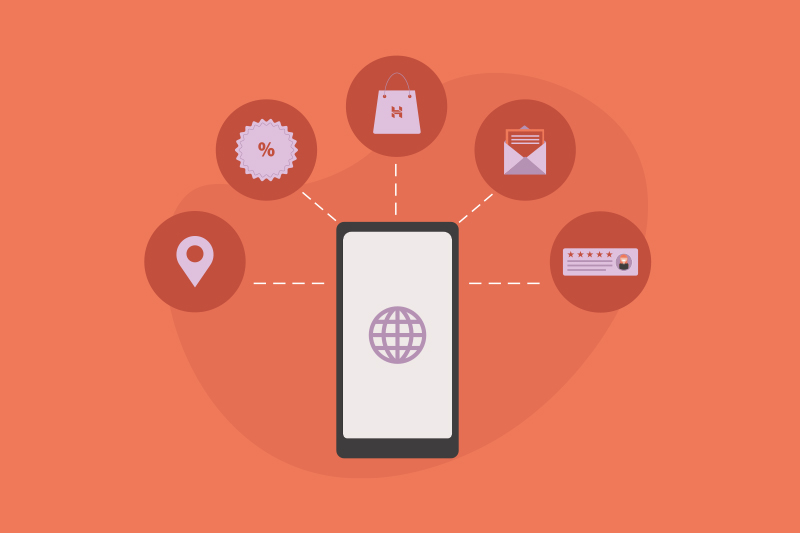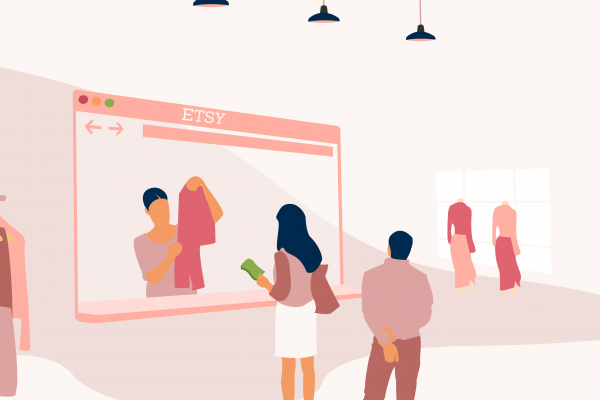
This article was written by John Teel who is the founder of Predictable Designs, a company which helps entrepreneurs bring new products to market.
There are many steps required to bring a product to market, but ultimately, it all starts with the product idea itself. If you have the wrong product idea, then all the other steps, no matter how well you perform them, won’t really matter.
I always say execution is where the true value is, however, every startup has to start with the product idea. It’s really critical that you select the very best product idea to bring to market.
Today we’re going to countdown 12 of the best ways for you to determine if you are focusing on bringing the best idea to the market. Although all 12 are important for your success, pay special attention to the last three.
12 – Easy to Reach Market
You want to choose a product that has an easily-reachable market.
Perhaps you may be thinking, “Everyone in the world can use my product. It doesn’t matter their age, location, gender, occupation, or income, they all will want it!”.
Maybe you are thinking “if only 1% of people buy my product that will mean 100 million units and $10 billion in revenue”. By the way, such a statement is a huge red flag for investors, causing them to run away as fast as possible. So please don’t ever say something like this.
I know it sounds really great, and you’re likely seeing dollar signs in the billions! But the truth is, a market that includes everyone will be really, really hard to reach.
It will always be easier to sell your product to 10% of the people in a group of 100,000, than to 1% of a group of 1,000,000 people.
You are better off focusing on a niche product, or at least somewhat of a niche product, that has a market that you can reach. This is the reason for the expression “the riches are in the niches”.
Many of you know that I developed and brought to market my own hardware product. What you don’t know is before that, one of my first entrepreneurial ideas involved selling tourist related items in Australia.
I had one day came up with the thought that in empty space there is no up or down, so there is no defined top or bottom to the Earth. The fact that Europe and North America are on the top of globes was merely because Europeans created most of the early maps and globes.
Fundamentally there is no reason why a globe can’t be inverted with places like Australia, Antarctica, and South America at the top of the globe. My idea was to sell upside down globes and maps (and t-shirts and such with upside down maps) in countries located south of the equator.
I’m not Australian nor have I ever visited Australia. I was pursuing this entirely from the other side of the planet in the U.S.
I had some initial luck with it. I had called a lot of people in Australia, tourist shops loved my idea, and they were interested in carrying my products in their stores. But ultimately, that business idea ended up failing.
The main reason it failed was I was trying to reach a market that was literally on the other side of the world from me. It was a market that I didn’t intimately understand.
11 – You Already Know the Market
Focus on a product for a market that you already know. This is ideally a market that you have prior experience in. This can be prior experience selling to this market, or just yourself being part of this market.
You don’t have to always limit yourself to your prior experience, but the markets that you’ve worked in, ideally over many years, are going to be the ones that you know the best.
You’re already able to understand what the market really wants, versus trying to go after an unknown market, like I did with Australia.
10 – Existing Competition
You want to choose a product idea that actually has some competition. Wait a minute, isn’t competition a bad thing? Shouldn’t I focus on developing a product that is completely unlike anything else on the market?
The answer to both of those questions is no!
Bringing a completely unique product to market can be really challenging. Not only do you have to convince people that this problem even exists and that they need it solved, but you also have to convince them that your product is the best solution to the problem.
Also, with entirely new products, you don’t even know for sure that there is a market for the product.
However, having a competing product that already sells well provides some proof that there really is a market for your product. You can consider a competing product as upfront proof that a market already exists for your product.
That being said, you don’t want too much competition, which is what I’ll discuss next.
9 – No Dominating Competitors
Although some competition is definitely a good thing, too much is definitely a bad thing. If you think you’re going to compete with the likes of Amazon or Apple, you’re just going to get eaten for breakfast. That’s not something you want to ever try to pursue.
For example, I would not recommend that you try to come up with a product that directly competes with an Amazon Echo. First of all, you will never be able to compete with Amazon’s price because they have massive economies of scale.
Secondly, you can never compete with them from a branding or marketing standpoint. Dominant companies like Amazon, Apple, and Microsoft have reputations for literally destroying their competition.
As another example, I would never recommend that anyone develop a new smartphone.
First of all, a smartphone is incredibly complicated and expensive to develop (Apple spent millions developing the first iPhone).
Secondly, there’s so much competition already that it would be impossible for a new startup company to ever stand out in such a crowded marketplace.
8 – Upfront Market Research
You always need to conduct considerable upfront market research before you fully pursue a new product idea. This research is going to help you determine if you’re focusing on the best product idea.
Let’s say you conduct some early market research using surveys, and your survey responses come back as, “I hate this product,” or, “I would never buy it,” or, “I would pay $5 for it, but you’re asking me for $100?”.
Those results are clearly telling you that this product is not something worth pursuing.
Unfortunately, it’s almost never that easy. It may be easy to quickly prove an idea is bad, but not so easy to prove that it is a good idea.
This is especially true with physical products where you are limited in how much upfront research you can do since you don’t have a product yet to actually sell or show.
For example, your early market research surveys may show that people really like the product idea, they say they need it, and they even say they will buy it when it becomes available.
However, if the product does become available these same people may never actually purchase it.
This is because it’s one thing to say you like a product and would buy it, but it’s quite another thing to put your hard-earned money down to purchase it. Someone who says “I love the product, I would buy one,” could walk by it a hundred times in a retail store and never buy one.
Just realize the limitations of any market data that doesn’t include money changing hands. What people tell you they will do is a lot different than what they really will do, especially when it comes to spending money.
But you should still make it priority to gather as much of this early feedback as possible.
Market research is one of the fundamental advantages of having your own online audience. If you don’t have an audience already, then start building one right away.
After garnering feedback from your audience, you can move on to the ultimate market research, which is to start pre-selling your product. This is what happens with crowd funding campaigns.
For crowdfunding most people focus on the money they will get, but the most valuable part is the market feedback and proof you will get because people are actually voting for your product with their money.
7 – Solves a Known Problem
Your product needs to solve a problem that people already know they have. It’s challenging enough to educate people on why they need to purchase your solution to a problem they have.
But it’s even harder to educate them about a problem that they don’t know they already have. It will make it exponentially more difficult to sell your product if you have to do both.
Having to make the customer aware that a problem even exists, means it’s something they’ve never thought of, so it’s not going to be a priority for them.
That’s a really difficult sell. Instead, focus on products that solve problems people already know they have.
6 – Differentiated Product
Your product needs to be significantly different from what’s already out there, and you don’t ever want to be in a situation where you have to compete on price.
Competing on price equates to low profit margins, which as explained already is never a good thing.
Instead, you need to compete on the product itself and the value that it adds, and not on price. Doing so will give you much higher profit margins and allow your company to grow much faster.
In order to do this your product needs to be differentiated in some way from any other solutions already on the market. What makes your product better than any solutions currently on the market?
5 – The Price is Right
Be sure to pick a product that’s in a good price range. First of all, you don’t want a product that has too low of a price. That’s because it will require a lot of volume to make any significant revenue.
This was one of the major mistakes I made with the physical product I brought to market. It only sold for between $5 and $10 meaning I had to sell a huge number to generate significant revenue and profit.
On the other extreme, if your product is too expensive, say $1,000, then that will present a significant barrier to people purchasing, especially if you’re an unknown company.
It’s much easier to get $5 or $10 out of a person, or even $100, than it is $1,000. Especially if they don’t know you or have experience with your products. That’s going to be a significant barrier to purchase.
Focus on products that aren’t too low in price, but also not too high. I’d say between $29 and a few hundred dollars would be the best price range.
4 – Recurring Revenue
Many may say the Holy Grail of making money is it to create recurring revenue streams. Recurring revenue simply means that your customers pay you a fee automatically every month. Most of the online software services you use are paid for on a monthly recurring basis.
If someone buys your hardware product, can you add a monthly fee to use a web service or an app that relates to your product?
Finding a way for your business or product to have recurring revenue will be a huge boost for your company, especially if you ever want to seek outside professional investments.
A lot of investment companies like this aspect because it makes revenue more predictable and allows a company to grow much faster.
For instance, Bolt.io is an angel investment group that focuses on hardware products. They specifically prefer hardware products with a recurring revenue model.
Recurring revenue is such a coveted way of making money because it’s predictable.
Obviously, people can cancel their membership or subscription, but in general you will have a group of customers that just keep paying, allowing you to know how much you’re going to be bringing in each month.
3 – Potential for a High Profit Margin
I know developing and marketing a new product can be tremendously exciting and fun. But ultimately, the goal is to make money, right?
This means you need to focus on a product with a high profit margin. You ideally want the suggested retail price for your product to be about 4x what it costs to manufacture.
You can push that down to 3x the manufacturing cost, especially if you’re selling direct to consumers and not going through distributors or retail chains. But I would not go any lower. For one thing, it becomes exceptionally difficult to grow a business with low profit margins.
That being said, you can’t expect to make a high profit when first starting. You’ll be lucky if you can just break-even on your first small production run. Many times you will need to sell your first several hundred units at a loss.
As your production volumes increase so will your profit margin. Once you reach volumes of 10k-100k pieces for most consumer products that is when you should expect to make a significant profit.
Profit should never be your immediate goal, and that will come later as you scale to higher volumes. In the early stages, focus your efforts on minimizing your development costs, not on maximizing profit.
However, you do need to have accurate estimates on what your manufacturing cost and profit margins will be once you reach those higher volumes.
For example, you may break even on volumes under 1k, make a small profit on volumes between 1k and 10k, then make a profit margin of 33% for 10k pieces, and finally reach 50% at volumes of 100k units.
You just need to know upfront that once you reach high enough production levels, a significant profit is possible.
If you determine in your analysis that 25% profit is all that can be made, even at high production volumes, then you likely may want to consider a different product, or consider if you can increase your sales price.
Keep in mind that investors love high profit margins (of course, right!) so having a higher potential profit margin will make it easier to find them.
2 – Affordable to Scale to Manufacturing
You want a product that’s affordable to scale from the prototype stage to mass manufacturing.
One major challenge of scaling a product to mass manufacturing is the cost of injection molds required for any custom plastic parts.
Each custom piece of plastic will require its own injection mold. For really high volume production, these molds are extremely expensive.
A minimum cost for a mold will be around $1,500 for a simple, low-volume mold. More complex molds for high-volume production can cost tens of thousands of dollars each.
Although developing a product that requires a bunch of custom shaped plastic pieces may be affordable using 3D printing, it will become significantly more expensive to scale when injection molding becomes required.
For example, if your product requires ten custom plastic parts, then you will need ten separate molds. Each mold will cost anywhere from $1,500 to $50k depending on the production volume and part complexity.
1 – Simple and Affordable to Develop
The number one most important attribute of a winning product for a startup is it needs to be realistically affordable for you to develop and prototype.
Product development is much more complicated than most lay people can imagine, so you must embrace product simplicity in order to have a real shot at success.
It’s really critical that you, especially for your first product, try to make the product as simple as possible. That way your development cost and your time to market will both be minimized.
It’s important that you get your product to market as fast as possible so you can begin gathering market feedback. Then, you can use that feedback to potentially modify the product to meet what the real market demand is.
I always encourage the concept of a Minimum Viable Product (MVP). Let’s say your product’s core functionality is Bluetooth audio, but you are also considering potential secondary functions such as motion detection or GPS tracking.
In such a case it is generally best to focus on only the core, essential functions for your first product version. Once you have real market data and sales then you can consider adding any potential secondary functions.
For suggestions on how to simplify your product be sure to read my blog where I share 10 tips to simplify your product.
Conclusion
The real value may be in the execution, but it all starts with the idea. You need to make sure you are putting your time, money and effort into a product that has the best chances of success.
If your product idea isn’t the best idea to pursue wouldn’t you rather know it now instead of later? You need to always be able to pivot as fast as possible. The more you know, and the earlier you know it, always the better!
Be sure to download your Ultimate Guide: How to Develop and Sell Your New Electronic Hardware Product.
This article was written by John Teel who is the founder of Predictable Designs, a company which helps entrepreneurs bring new products to market. John was formerly a design engineer for Texas Instruments where he created electronic designs now used in millions of products. He is also a successful entrepreneur who developed his own hardware product that sold in over 500 retail locations in three countries.


